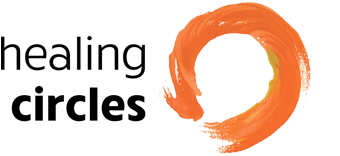An A-B-C of Stress Management
Our powerful and originally lifesaving fight-or-flight response to stress happens naturally and quickly in reaction to stressors in modern life. Stressors are all around us, and we benefit greatly when we have ways to manage stress and restore a less activated state of being.
Fortunately, there is an abundance of helpful information available in this area. (See other blog posts on this site for information about yoga, restorative breathing.) There is no end to our choices of classes, blogs, workshops, and programs through which we can learn to support our own well-being.
In addition, I would like to offer a quick and easy tool that I created after many years of study and practice that can serve as a simple, direct, and powerful way to deal with your own stress. This tool makes an ideal Circle of One practice in self-care and focuses on the essential three factors that are most useful in shifting your body from fight-or-flight to calm.
These factors are:
- Awareness
- Breathing
- Choosing what to do
Here’s a mini how-to:
- Awareness: Bring your awareness to your experience in the present moment. Feel the tension in your body, be aware of your state of being, and realize your state of mind. By simply being aware of what you are feeling and thinking, you can begin to interrupt and shift your stress response. With practice, this first step can take about five seconds.
- Breathing: Take a deep abdominal breath and fully exhale. Then take another. If your impulse is to take more of these deep refreshing breaths, do that and notice what has happened to your body and mind. If you’d like a little structure, try Andrew Weil’s 4-7-8 Exercise. The exhale in this practice is twice as long as the inhale, which has a direct, calming effect on the nervous system.
- Choosing: Now that you’ve slowed down a bit, become aware, and have given your body and brain more oxygen, you’ve created a bit of space and opportunity to choose the next right thing for you to do. You can tune in to that part of you that knows where your own healing lives, connect with your own higher priorities, or remember the coping resources you know that you already have available to you. You can use this little bit of spaciousness to be more mindful. Or you can simply choose a small action that will support you and serve to balance your own physical, mental, emotional state.
Give it a try right now, and see if this might be a tool to add to your own wellness toolkit, especially when you need a short and effective support practice.
Header image CC BY-SA 2.0 by IQRemix

 CC BY-SA 2.0 by IQRemix via Flickr
CC BY-SA 2.0 by IQRemix via Flickr

